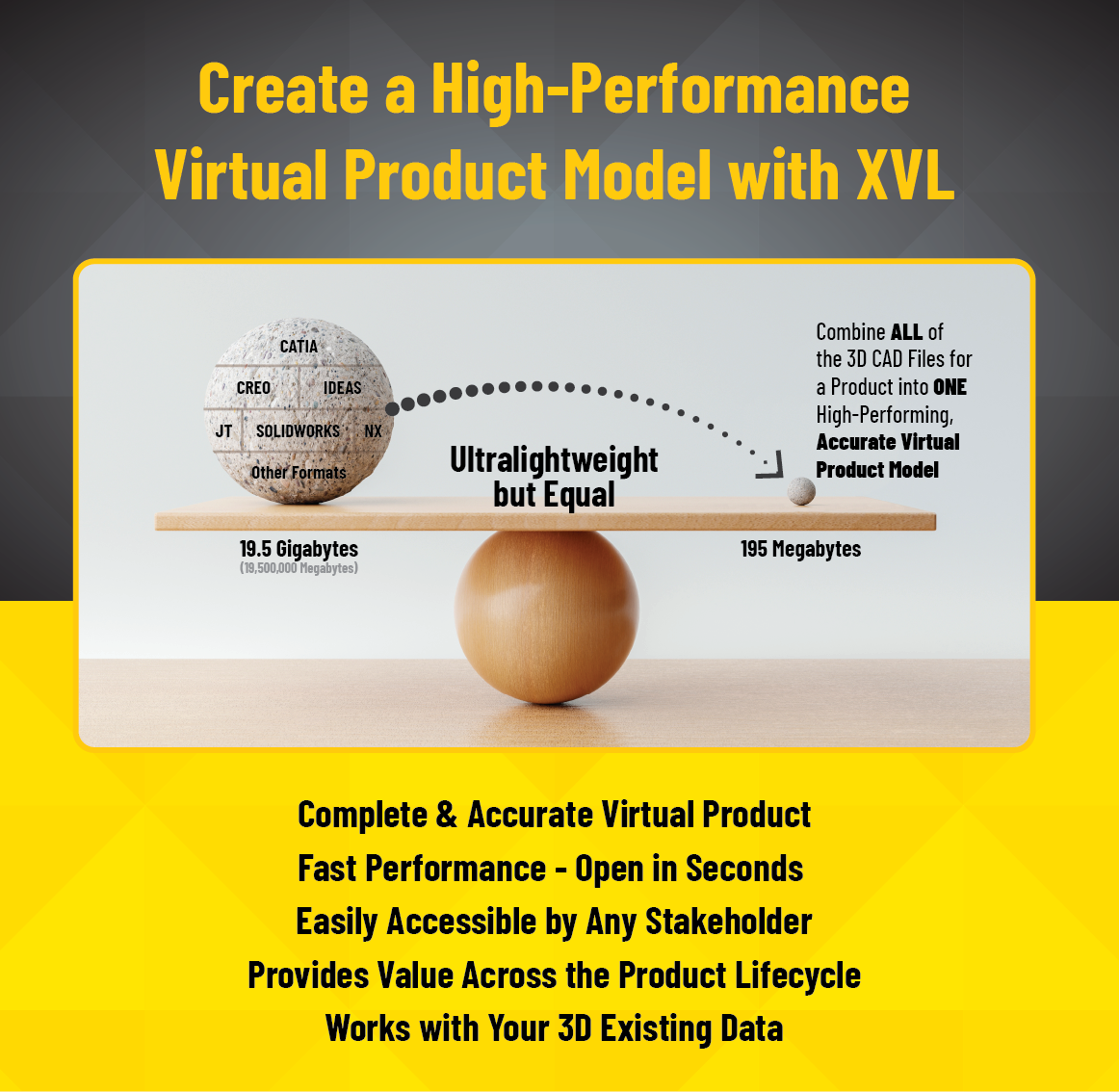How KCM, a machinery manufacturer, Used XVL to Revamp Their Manufacturing Processes
KCM Corporation, a machinery manufacturer, underwent a digital transformation, leveraging XVL to solve business challenges and improve productivity.
Overview
KCM's Digital Transformation with XVL
- Reduced design changes by 48%: By enabling non-CAD users in the Design Department to perform interference checks using XVL, KCM significantly reduced the number of design changes.
- Improved production planning: XVL facilitated early collaboration between the Design and Production departments, reducing misinterpretations and rework.
- Reduced production lead time: The use of XVL-based 3D work instructions provided clear guidance to shop floor workers, optimizing production processes.
- Streamlined product support: XVL enabled the easy creation of parts catalogs and operation manuals, significantly reducing man-hours.
- Enhanced sales and marketing: XVL facilitated the creation of product brochures, sales materials, and videos for exhibitions.
- Enabled global collaboration: XVL allowed KCM Japan and KCMA in North America to share 3D models and M-BOM data, optimizing task sharing and production.
These examples highlight how KCM successfully implemented XVL across multiple departments, achieving significant productivity gains and streamlining various processes.
Digital Transformation at KCM
KCM's digital transformation journey began by integrating XVL, a 3D format that compresses CAD files to 1% of their original size while maintaining accuracy. This allowed for easy sharing and collaboration across departments.

Reduced Design Changes
One key benefit of XVL was the ability to involve non-CAD users in technical 3D collaborations. This was particularly helpful in the Design Department, where a wider range of employees could perform interference checks. The result was a 48% reduction in design changes.
Better Production Planning with Collaboration
XVL also played a crucial role in production planning. By enabling early collaboration between the Design and Production departments, XVL facilitated the creation of easy-to-understand 3D collaboration documents. This significantly reduced rework caused by misinterpretation and allowed the Production department to optimize production processes.
Digital Work Instructions
The implementation of XVL-based 3D work instructions provided shop floor experts with a clear understanding of optimal production processes, leading to a significant reduction in production lead time and design changes.
XVL Use Across the Product Lifecycle
KCM also extended the use of XVL to other departments, including Product Support and Sales Planning, where it was used to create parts catalogs, operation manuals, product brochures, and sales materials.
Furthermore, XVL facilitated global collaboration between KCM Japan and KCMA in North America by enabling the sharing of 3D models and M-BOM data. This allowed for optimal task sharing and faster production and launch in the US market.
XVL is Unique - It Leverages ALL of your Existing 3D CAD Models
- Supports All Major 3D CAD Formats: All 3D CAD Files are Combined into a 3D Digitial Twin
- Accurate: XVL Maintains CAD-Level Precision for Real Work
- Lightweight: About 1/100th the Size of the Original CAD files for Fast Performance, e.g., 19.5 gigabytes or 19,500 megabytes reduces to 195 megabytes
- Processes Net Changes Between CAD Versions: Very Important for Preserving Work when Engineering Change Orders (ECOs) occur
- Use by Stakeholders: Many Options are Available for Stakeholders, including Microsoft Excel, Webpages, Web App, 3D PDF - ALL FREE

Conclusion
KCM's digital transformation journey and adoption of XVL highlight the power of digital technologies in driving productivity and collaboration across all aspects of a manufacturing business.
